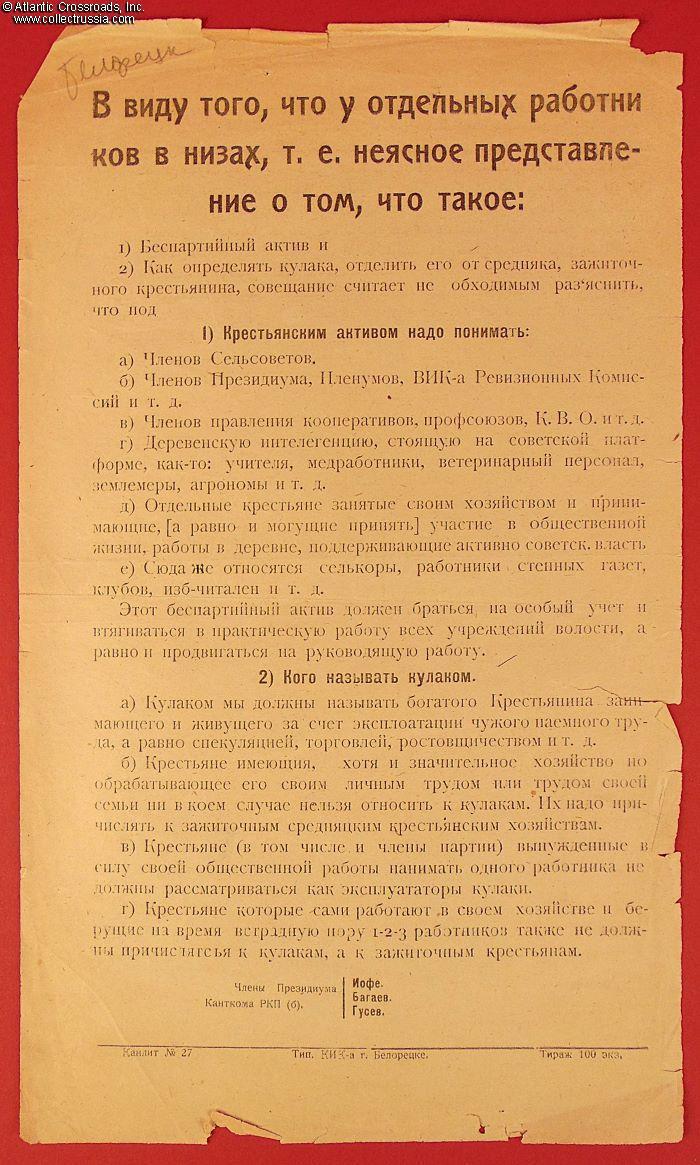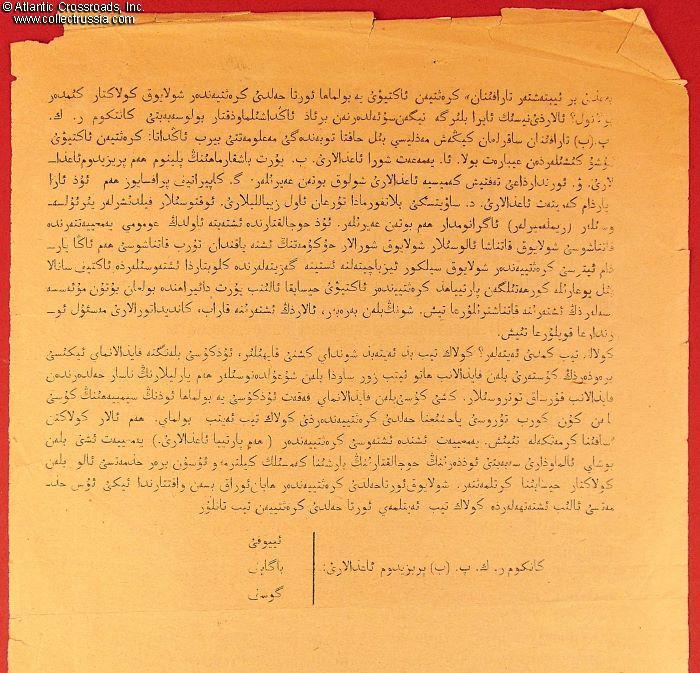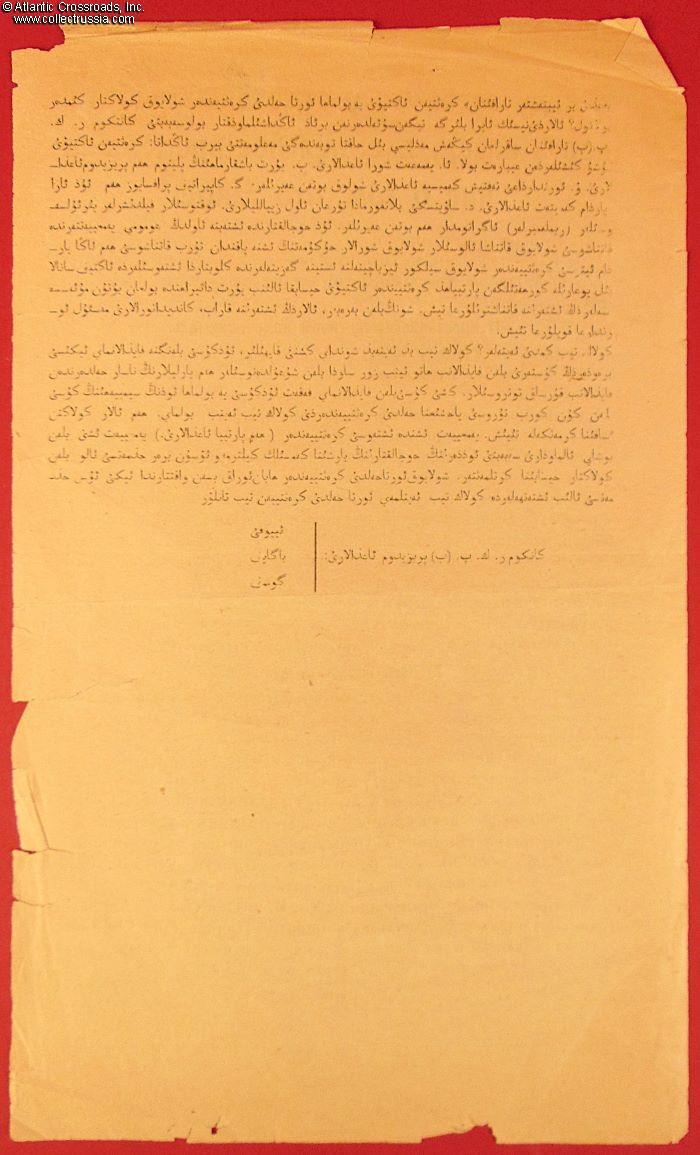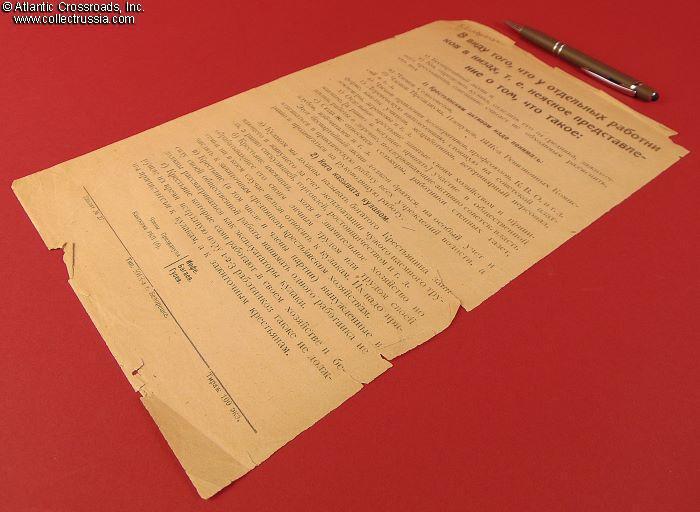
Leaflet explaining differences between Kulaks and other farmers, circa 1920s.
Single page 8 ½" x 14", front and back. Published by the RKP(b) Committee of Beloretsk Canton, modern-day Bashkortostan. Circulation mere 100 copies. The flyer elaborates on two subjects: how to treat politically unaffiliated peasantry, and what differentiates a kulak from a regular well-to-do farmer. For the rural population who had been living off the land for uncounted generations, Bolshevist politics was quite low on their priority list, so the Bolsheviks used this flyer and others like it to enlighten them, in other words, to impose their position on the farmers' minds. So,
Single page 8 ½" x 14", front and back. Published by the RKP(b) Committee of Beloretsk Canton, modern-day Bashkortostan. Circulation mere 100 copies. The flyer elaborates on two subjects: how to treat politically unaffiliated peasantry, and what differentiates a kulak from a regular well-to-do farmer. For the rural population who had been living off the land for uncounted generations, Bolshevist politics was quite low on their priority list, so the Bolsheviks used this flyer and others like it to enlighten them, in other words, to impose their position on the farmers' minds. So, for the low ranks of farmers who did not have a clear idea, here is how they should understand these two issues: (a) politically unaffiliated among them must be recorded and pulled into local Bolshevist politics; and (b) a kulak is a rich farmer who lives by exploitation of hired labor, trade, money lending, etc.
The verso has, apparently, the same text in Persian. Evidently, there was sufficient Farsi-speaking population in Beloretsk to warrant the translation.
In very good condition: the wear to the edges is mostly confined to the margins; three short tears to the right edge can easily be repaired on the verso with acid-free tape, if desired. The text is bright and clear, perfectly legible. The paper is pliant but very thin and should be handled with due care.
From 1861 when serfdom was abolished in Russia to the beginning of the 20th century, about 20% of farms in Russia could fall under the Bolshevist definition of kulaks. They produced 50% of grain, owned industrial enterprises, etc., etc. To grow and prosper, they had to "live off hired labor." To "expropriate" the fruit of their labor, the Bolsheviks exiled and executed over 2 million of those business-savvy entrepreneurs.
Please note that the pen in our photo is for size reference.
$90.00 Add to cart



